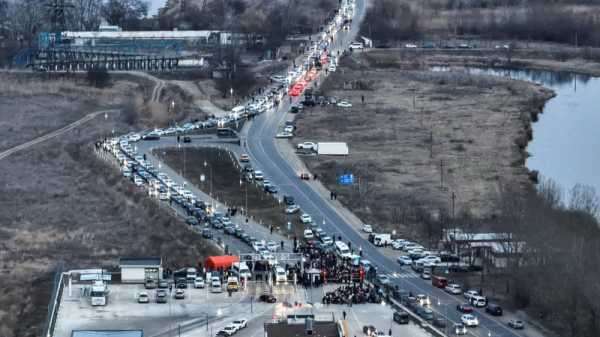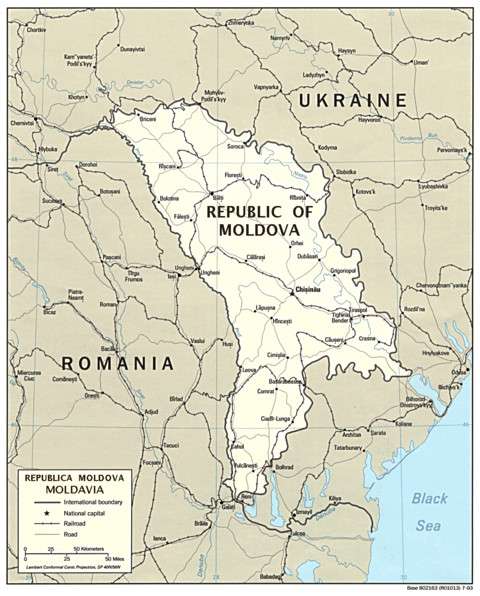
Ukrainians fleeing into Moldova on 27 February. If a puppet regime is installed in Ukraine, Moldova may be next (Photo: Moldova government)
As soon as the war in Ukraine started, concerns were raised over Ukraine’s immediate neighbour, the tiny 2.6 million-strong Republic of Moldova, and whether it represents Putin’s next move.
The Ukraine invasion brings up two of the main challenges for Moldova: its dependency on Russian gas, and future of the Transnistrian breakaway region, supported by the Russian Federation.
-

The breakaway region of Transnistria is in the east of the country, between the River Nistru and the border with Ukraine. It has its own currency, its own capital, uses Russian as its official language (Photo: Wikimedia)
First, gas.
In Eastern Europe, energy supply is a delicate and geopolitical question: the biggest gas supplier of the region, Russia, is exploiting dependencies and pressuring countries in adapting policies favourable to the Kremlin.
In October 2021, the Moldovan government was forced to declare a state of emergency after a gas contract with Russian state gas company Gazprom was due to expire this year and the new contract offered by Gazprom included a three-fold price increase.
This drama unfolded at a time when Moldova did not want to weaken its ties with the European Union. The Moldovan government alone was not able to pay the Gazprom price.
Finally Moldova received a pledge of €60m in aid from the EU, which helped cover the costs for the gas. But the saga exposed Moldova’s biggest vulnerability – Russia’s arm-lock on Moldova’s energy.
The Transistria ‘frozen conflict’
Another Moldovan vulnerability is Transnistria. The breakaway region is in the east of the country, between the River Nistru and the border with Ukraine.
It has its own currency, its own capital, uses Russian as its official language, and has developed political and economic ties with Russia.
It also hosts an estimated 1,500 Russian troops, described as Russia “peacekeepers”, and the largest ammunition depot in Eastern Europe is located there (in Cobasna).
Moldovan authorities have no control over this territory.
And then there is the link to Ukraine.
Putin’s Novorossiya project suggests he will be interested in linking the Donbas region through Kherson in Ukraine, with Transnistria.
If a puppet regime is installed in Ukraine, then the effects may be felt in Moldova, which could face similar pressures as Ukraine does now, effectively to renounce Western ambitions and accepting a dummy government in service of Russia.
To be sure, the country is not of the same significance for Russia, either geopolitically or in terms of resources.
Already Moldova is part of the EU’s Eastern Partnership and it’s working towards a reform agenda aimed at regulatory approximation to the EU as well as economic integration.
But current events still are highly worrying for Moldovans.
Given the Russian military aggression in Ukraine, the Moldovan people are on high alert. Obtaining a fast-track EU candidate status is seen as a security guarantee in Chisinau, the capital.
But, in turn, the Transnistrian authorities have begged for a recognition of their status.
Huge problems could be looming for Moldova if the EU doesn’t preemptively act — and do so in a way that help to stop history from repeating itself.
Source: euobserver.com